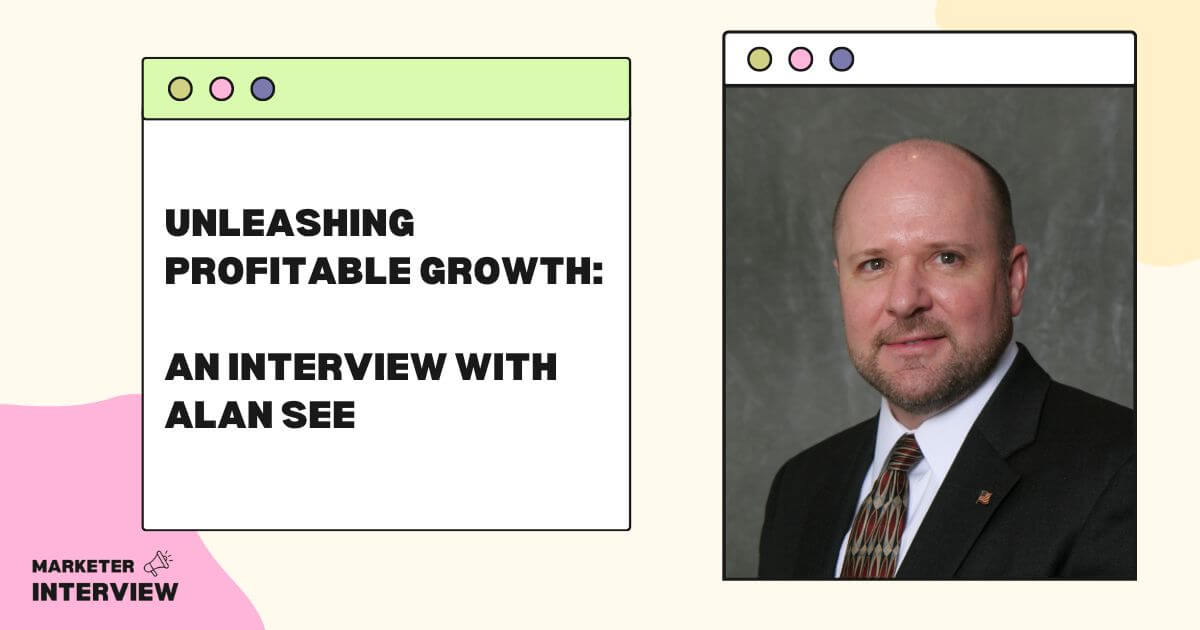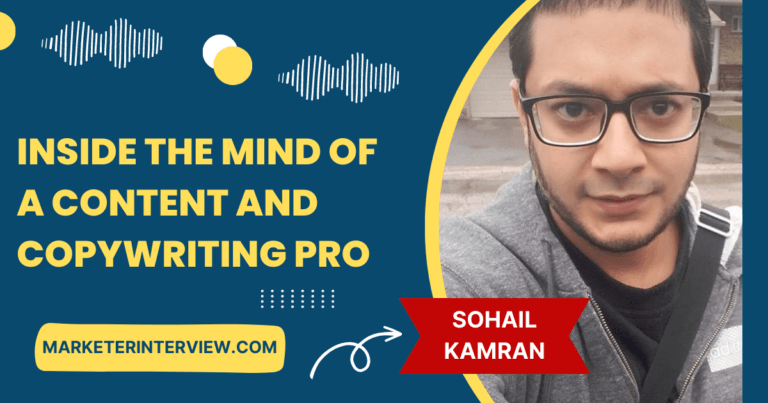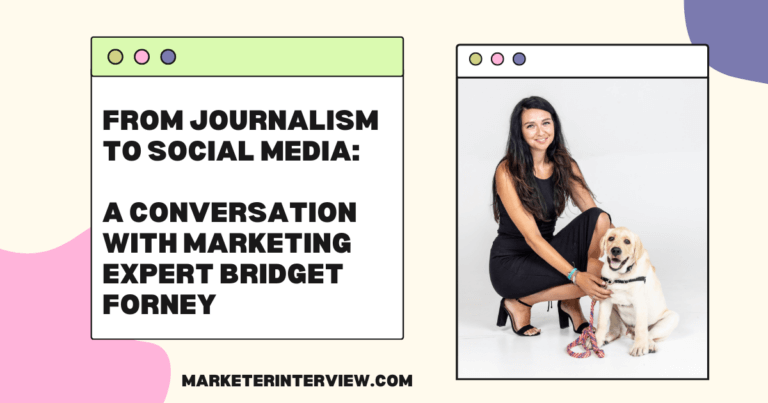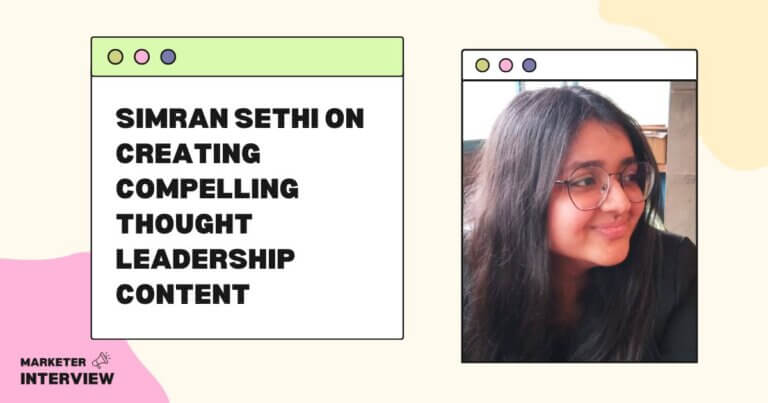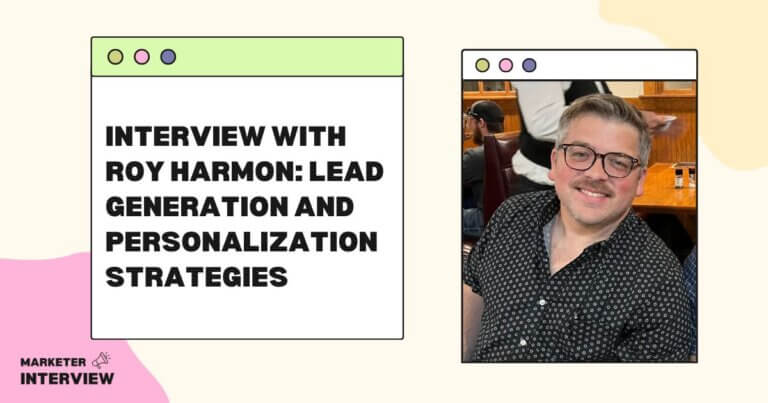Unleashing Profitable Growth: An Interview with Alan See
Welcome to Marketer Interview, where we delve into the fascinating journeys and insights of remarkable individuals shaping the marketing world.
In this edition, we have the pleasure of interviewing Alan See, a seasoned marketing professional with accolades for his expertise in content marketing, social media marketing, and more.
Alan’s distinguished career spans working with renowned brands like IBM, Cap Gemini, and AT&T, as well as startups and non-profit organizations. Join us as we explore Alan’s experiences, strategies, and the valuable lessons he has to share.
Contents
- 1 Can you share how you first became interested in marketing and how that led you to your current role as a Chief Marketing Officer?
- 2 Your trust equation: Trust = (Rapport x Credibility) / Risk, is widely recognized. Can you elaborate on how you developed this equation and how it has influenced your marketing strategies?
- 3 With your extensive experience in content and social media marketing, what key principles or approaches do you believe contribute to their success?
- 4 What advice for marketers looking to establish and strengthen their brand in today’s digital landscape?
- 5 You’ve worked with both global brands and smaller organizations. How do your strategies differ when working with such diverse entities, and what challenges have you faced in adapting to each?
- 6 What important lessons have you learned from teaching marketing concepts to students, and how has it influenced your professional growth?
- 7 Could you share an example of a particularly challenging marketing campaign or project you’ve worked on? What were the obstacles you faced, and how did you overcome them?
- 8 With the ever-evolving marketing technology landscape, what essential tools and software do you rely on to streamline your work and maximize productivity?
- 9 How do you approach data analysis and measurement in your marketing initiatives? Are there specific metrics or KPIs that you find most valuable in evaluating success?
- 10 As a blogger and presenter, how do you stay informed about the latest marketing trends and developments?
- 11 What do you envision as the most significant opportunities and challenges for marketers in the coming years?
My interest in marketing started in the early ’80s while completing my MBA. But it took root with data warehousing through Teradata when that company was still part of NCR Corporation.
In 2000, after 15 years with NCR, I had the opportunity to move to the High Growth consulting practice at Cap Gemini Ernst & Young. There, I helped develop CG&Y’s Intelligent Customer Growth platform and launch their CRM Index study.
Through that study, I had the opportunity to interview CMOs across several industries and knew my goal was to become a Chief Marketing Officer.
Your trust equation: Trust = (Rapport x Credibility) / Risk, is widely recognized. Can you elaborate on how you developed this equation and how it has influenced your marketing strategies?
Relationships will not grow without trust. Trust is, in fact, the real currency in today’s social media economy.
To build trust with an individual (customer), you need to work on increasing rapport and credibility while reducing their risk. If your customer engagement strategy is focused on moving those three key elements in the correct direction, you will build trust, helping the relationship to grow.

Your content needs to be relevant. The audience is interested in the material based on their customer profile.
Content must also be timely: The delivery is relevant based on current events, behaviors, or feelings and delivered through their preferred social media channel.
Finally, your content also needs to create value that fulfills the customer’s needs, desires, and emotions.
If it’s not relevant, timely, and valuable, it won’t penetrate the noise.
What advice for marketers looking to establish and strengthen their brand in today’s digital landscape?
Building and nurturing your brand and network must be top-of-mind from the beginning of your career. That may feel like a conflict of interest with your employer, but it’s not.
At the end of the day, “freelancer” is a term that does describe all of us. We are all lifelong freelancers with our unique brand.
Our careers aren’t based on paths or ladders but are more like landscapes that must be navigated because no lifetime employment guarantees exist. Our ability to influence people will determine our financial security and social standing. And if you want to influence people, you need to understand empathically the power of their point of view and feel the emotional force with which they believe it.
As you can imagine, building credibility, trust, and a social audience that respects you takes time and knowledge. So, to thrive in that mission, you will need to adopt the mindset of a lifelong learner. Lifelong learning is more than adult education or training; it is a habit for you to acquire.
You’ve worked with both global brands and smaller organizations. How do your strategies differ when working with such diverse entities, and what challenges have you faced in adapting to each?
With larger organizations, I’m usually not leading their marketing organization because I’m more often brought in to be a social media/content marketing coach and change agent. Even today, there are still senior-level players who are not comfortable with social media on a personal basis or how their brand connects with and influences the corporate brand.
Often with small-to-medium-sized businesses, I find that marketing is still under their sales leader because they have not separated the two disciplines. That can bring challenges because, in the B2B world, many sales leaders focus solely on their sales funnel and don’t think about branding or content.
What important lessons have you learned from teaching marketing concepts to students, and how has it influenced your professional growth?
Yes, I love to teach, but I don’t particularly look forward to grading papers! Having said that, providing feedback is one of the most important things a leader can do.
My experience with one of the world’s largest global learning infrastructures allowed me to be certified to teach online, on-ground, and FlexNet (which combines online and on-campus learning).
I’ve been certified to teach Marketing, eBusiness, Management Theory, Critical Thinking, and Business Ethics. That means I’ve personally experienced course and content design and delivery and built grading rubrics and feedback systems. I keep that experience in mind and strive to be a lifelong learner.
That’s an interesting question.
Do you think the freedom to fail is a myth at most companies? Can you name one person that has had a major failure? If they are still employed, is their career still on track? If your business culture is risk-averse, you may be unable to name even one person.
In the mid-’90s, a major consulting firm recommended that NCR Corporation create a professional inside sales organization. Not just a regular call center or telesales group, but transition field-based, complex solution-selling account management roles to a group that would not travel or engage in face-to-face sales meetings.
It sounds very easy now, but this was before the Internet, and NCR’s hard-charging field-based sales culture did not like the idea of being downsized. I was asked to lead that initiative with a pilot program and then directed to dismantle it after one year.
It was an idea before its time, but I learned some good lessons during that pilot, and I wanted to document and share the experience with the organization. I used a “learning history” format for my final report.
Learning History defined:
A learning history is a unique approach to helping an organization learn from the experience and implications of its learning and change initiatives. All efforts to transform organizations sooner or later run up against the challenge of proving their value.
Yet traditional assessment approaches, reacting to everyday pressures, can easily undermine the initial learning effort. As people become aware of being judged and measured, they seek to satisfy the evaluation criteria instead of improving their capabilities.
The intrinsic motivation which drives learning is then supplanted by the desire to look successful. Yet evaluation is vital to learning as a feedback process that provides guidance and support. Learning histories respond to this dilemma.
Creating an environment where it feels safe to fail is very difficult. I suppose that’s why most business cultures are not bent that way. When you combine that with the fact that most of us are terrified of the prospect of individual failure, it’s a wonder any risks are taken.
A learning history won’t change that fear. But I can report that if you approach your change initiative leveraging a learning history point-of-view and format, the expression “experience is the best teacher” will come to life.
With the ever-evolving marketing technology landscape, what essential tools and software do you rely on to streamline your work and maximize productivity?
Focusing on a particular tool or software program would not serve my role. Remember, my role is generally fractional, interim, or part-time.
Each organization I have worked with has had different sales and marketing platforms. So, I don’t have a favorite. I must learn quickly and adapt to the toolset that is available to me at the time.
How do you approach data analysis and measurement in your marketing initiatives? Are there specific metrics or KPIs that you find most valuable in evaluating success?
You would think that my data warehousing and business intelligence background would put me squarely in the analytics camp. It hasn’t.
I’m in the B2B space where complex solution selling with long sales cycles, high deal values, and multiple decision-makers is the norm.
Also, I spent the first half of my career in sales carrying a quota! The KPI I’m looking at is the sales funnel. Are leads increasing? Is the quality of the leads improving? Are we reaching out and having conversations with all the decision-makers?
As a blogger and presenter, how do you stay informed about the latest marketing trends and developments?
The term “digital native” is often used to describe individuals born after 1980, when social digital technologies came online.
In other words, social media and other digital technologies are supposed to come naturally to them. Don’t believe it. Whether you are a digital native or digital immigrant (old-world settlers who have lived in the analog age and immigrated to the digital world), using content marketing and social media for business requires training.
Social media channels often become the “voice” of your brand. To minimize your risk, you must carve out time and money to continue your education. I have nearly 80K Twitter followers and thousands of connections and followers on LinkedIn. That means my resource pool is both wide and deep.

What do you envision as the most significant opportunities and challenges for marketers in the coming years?
When Ted Turner was asked for the secret to success, he said: “Early to bed, early to rise, work like hell and advertise.”
That is not something marketing people can bet their careers on anymore. We live in a relationship-based economy. The consumer is looking for transparency, trust, relevance, and engagement. To meet those expectations, you will need a comprehensive content and social media strategy.
Here are my eight steps to Blue & Gold Loyalty:
- Brand: Start with a strong brand identity with which your customers can identify. Your brand must communicate a message and inform, motivate, and deliver as promised. The better your brand keeps its promises, the better it is at being trusted.
- Learning Relationships: Organizations implementing learning relationships can better understand and anticipate a customer’s needs. Learning organizations understand that great customer experiences start with listening to the customer to learn instead of talking to the customer to sell. Customers in a learning relationship experience a heightened sense of vendor awareness and are likelier to be loyal because their vendor understands their needs.
- Use technology to connect positively and collaboratively: Customer connections that engender loyalty deliver a seamless experience across channels and touchpoints while demonstrating integrity and interest.
- Ensure and Empower: Ensure high-quality customer interactions that demonstrate a caring attitude by empowering your employees to resolve problems. If you want your people to act like it’s their business, make it theirs. Empowerment leads to never losing a customer over a stupid rule.
- Great Service: Almost every customer has a service support need at some point. Use support incidents as an opportunity to solidify relationships. Providing excellent service and quick resolution can build customer trust.
- One view of the company: Despite the desires of corporate managers, the customer ultimately controls the relationship. If the customer is in control, don’t they need a 360-degree view of the company? Great customer experiences start when you make it easy for the customer to do business with you.
- Layers: Customers have layers, and relationship layers are built on trust and dialog over time. Customer loyalty requires the care and commitment to take the time, invest the money, and have the patience to grow the relationship.
- Dynamic real-time processes: Building relationships takes time; however, instant gratification has been a feature of our everyday lives for a long time. Give your customers their rewards now and keep your promises on time.
